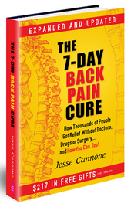|
Plantar Fasciitis Symptoms and
Plantar Fasciitis Causes
Plantar fasciitis symptoms result from inflammation of the plantar fascia, a thick band of connective tissue which runs under the foot from the heel to the toes. Plantar fasciitis (pronouned PLAN-tur fas-e-I-tis) is a very common cause of heel pain. The inflammation can be caused by small tears in the fascia resulting from repetitive stretching associated with the risk factors listed further down this page.
In most cases, the pain associated with plantar fasciitis:
- feels like a sharp stabbing pain
in the heel
- feels the worst with the first steps
in the morning.
- may feel worse after getting up
from prolonged sitting.
- is aggravated by long periods of
standing
- develops gradually
- affects just one foot
Plantar fasciitis symptoms can be decreased and healing aided by the use of a night splint. The night splint extends along the back of the calf and under the foot. It is designed to keep the foot in a somewhat flexed position during the night. With the toes pulled up towards the shin the plantar fascia is stretched and heals somewhat during the night in that position. Without a night splint the foot would normally be in the somewhat extended position during sleep. In this case, any healing that occurs is with the fascia in a shortened position. Then, with the first steps in the morning, as the fascia is stretched, the healed portions tear causing pain. The night splint allows healing to occur in the stretched position and thus can avoid the tears and greatly reduces the pain in the morning.
The effect of the night splint explains why one of the most noticeable of plantar fasciitis symptoms is the pain with the first steps in the morning. Once your foot limbers up, and the tears have happened the pain normally decreases.
Risk Factors
Factors that may increase your risk of developing plantar fasciitis include:
- Age. Plantar fasciitis is most common for people from 40 to 60 years old.
- Exercises that especially stress the heel such as long-distance running or any vigorous activity on a hard surface can be a factor in causing plantar fasciitis.
- Foot problems such as flat-footedness, high arches or an abnormal gait can strain the plantar fascia.
- Gender Women have a higher incidence than men of plantar fasciitis.
- Standing or walking on hard surfaces for long hours. This can damage the plantar fascia.
- Overweight Excess weight puts additional stress on your plantar fascia.
- Shoes that are incorrect for your feet. Shoes that are thin-soled, too loose, or lack arch support or the ability to absorb shock don't protect your feet. Wearing high heels can shorten the Achilles tendon (which joins the back of the heel to the calf muscles) causing strain on the heel.
Complications
Ignoring plantar fasciitis symptoms may result in a more chronic condition that hinders regular activities and makes you feel less like wanting to exercise which is another negative. There is also the danger of developing knee, hip or back problems because of the effects on posture and walking.
|
Keep up to date with
valuable insights into
pain management via
a healthy lifestyle.
Receive the monthly
Natural Pain Relief
Guide Newsletter.
News articles, health
tips, specials, freebies.
Enter your email and name
in the form to the right.
|
|
|








New! Comments
Have your say about what you just read! Leave me a comment in the box below.